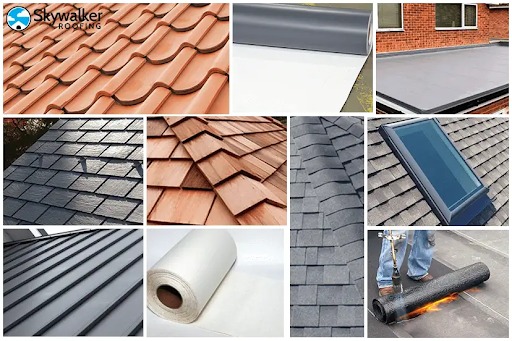Sustainability has become more than just a buzzword—it’s a way of life. With the rising concerns about climate change and resource depletion, adopting eco-friendly construction practices has never been more crucial. One key aspect of sustainable construction is the use of eco-friendly roofing materials, which offer numerous environmental, economic, and aesthetic benefits.
In this blog, we’ll take a deep dive into the best eco-friendly roofing materials for house construction in 2025, with a special focus on their relevance in India. We’ll cover their benefits, applications, and how they contribute to building a sustainable future.
What Are Eco-Friendly Roofing Materials?
Eco-friendly roofing materials are designed to minimize the environmental impact of construction while offering durability, energy efficiency, and aesthetic appeal. These materials are sourced sustainably, often involve recycling, and are either biodegradable or recyclable at the end of their life cycle. They play a vital role in reducing carbon footprints, conserving resources, and ensuring a comfortable living environment.
Why Choose Eco-Friendly Roofing Materials?
- Environmental Benefits:
- Reduces greenhouse gas emissions by lowering energy consumption.
- Minimizes waste by utilizing recycled or natural materials.
- Cost Efficiency:
- Energy savings through insulation and heat reflection.
- Long-lasting materials reduce repair and replacement costs.
- Improved Comfort:
- Better insulation leads to a more stable indoor climate.
- Certain materials, like white roofs, help keep homes cooler in hot climates.
- Health Benefits:
- Green roofs and natural roofing materials improve air quality and reduce allergens.
- Aesthetic Appeal:
- Materials like reclaimed slate and bamboo panels add a unique and elegant look to homes.
Top Eco-Friendly Roofing Materials for House Construction in 2025
White Roofs
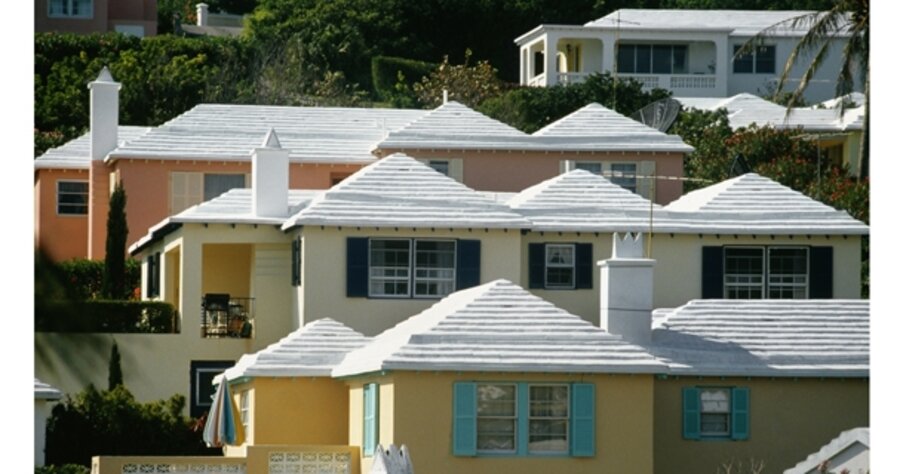
White roofs are painted or coated with reflective white paint, which significantly reduces heat absorption.
- Key Benefits:
- Reduces urban heat islands.
- Lowers energy bills by minimizing cooling needs.
- Suitability in India:
- Highly effective for Indian cities with hot climates like Delhi, Chennai, and Mumbai
Reclaimed Slate or Clay Roofs
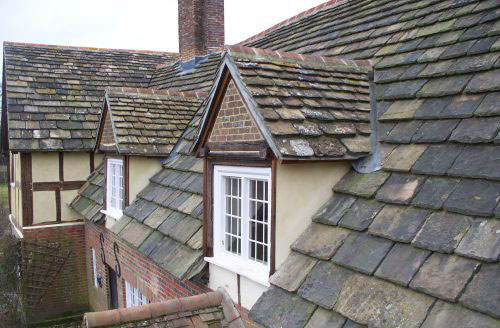
These roofs use materials salvaged from old buildings, extending their lifecycle and reducing waste.
- Key Benefits:
- Extremely durable and weather-resistant.
- Adds a rustic charm to homes.
- Suitability in India:
- Ideal for traditional and heritage-inspired homes.
Solar Tiles

Solar tiles combine the functionality of roofing with solar energy generation.
- Key Benefits:
- Provides renewable energy for your home.
- Reduces dependency on grid electricity.
- Suitability in India:
- Works best in areas with abundant sunlight, like Rajasthan and Gujarat.
Green Roofs (Living Roofs)
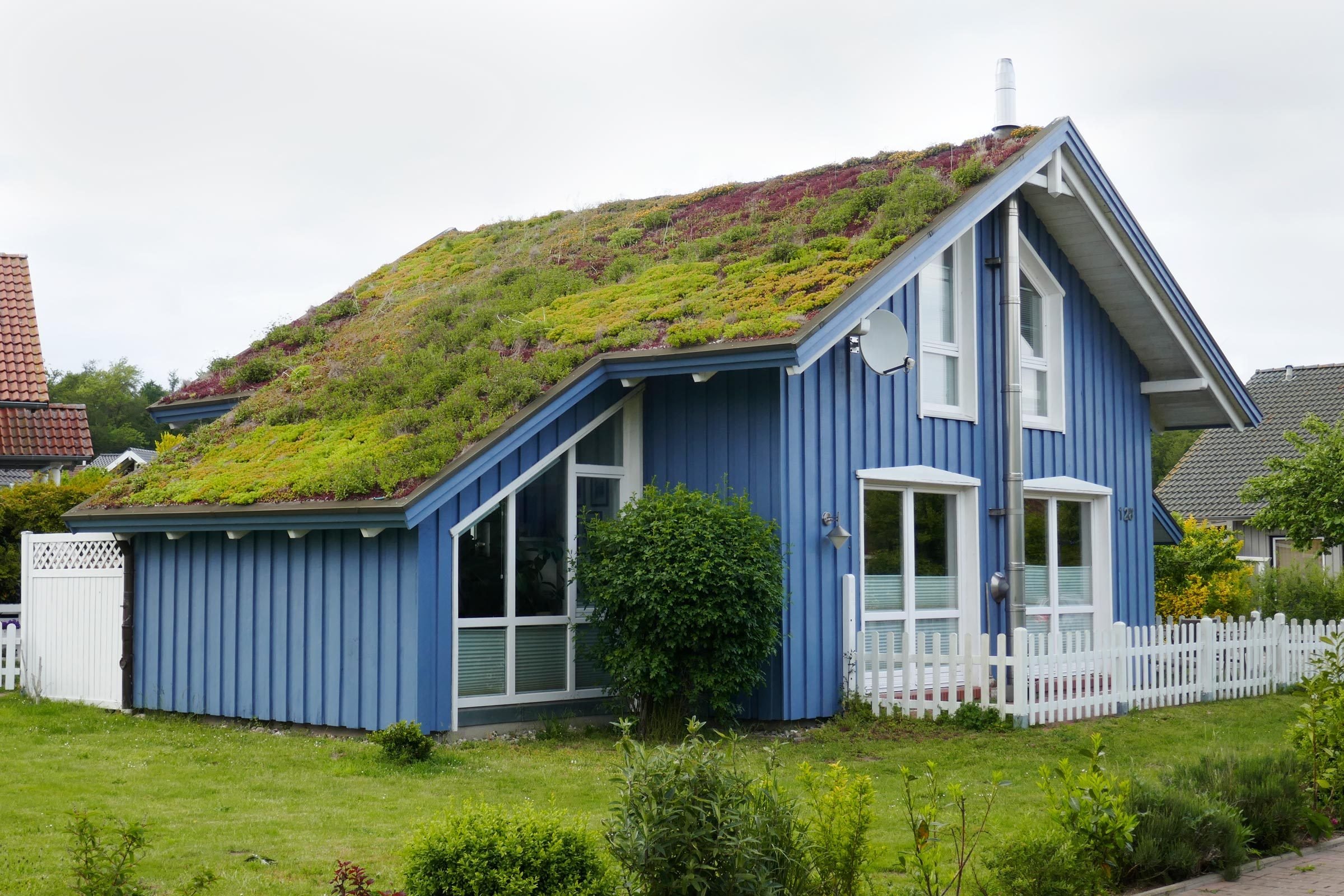
Green roofs are essentially rooftops covered with vegetation.
- Key Benefits:
- Improves air quality.
- Provides natural insulation and reduces heat absorption.
- Suitability in India:
- Perfect for urban homes and apartments with limited green spaces.
Bamboo Roofing Panels

Bamboo is a rapidly renewable material that is lightweight and biodegradable.
- Key Benefits:
- Sustainable and aesthetically pleasing.
- Naturally resistant to pests and harsh weather when treated.
- Suitability in India:
- Commonly used in eco-resorts and homes in tropical regions like Kerala.
Metal Roofs
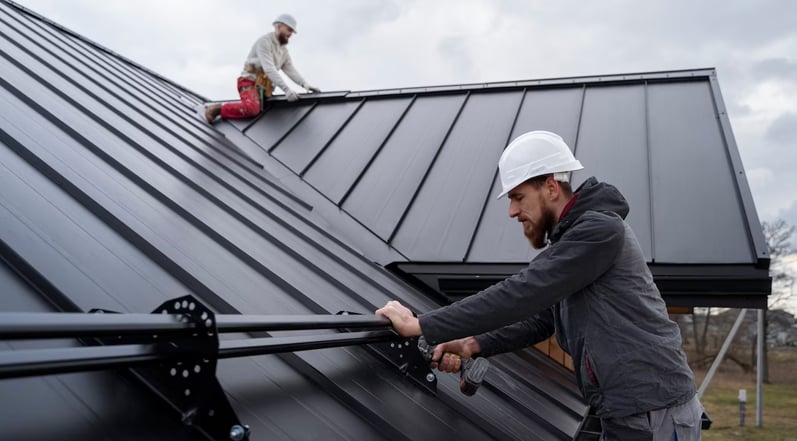
Metal roofs, often made from recycled aluminum or steel, are highly durable and sustainable.
- Key Benefits:
- Reflects sunlight, reducing cooling needs.
- Fully recyclable at the end of its life.
- Suitability in India:
- Suitable for both rural and urban areas.
Shingles Roofing

Shingles can be made from materials like recycled asphalt, wood, or fiberglass.
- Key Benefits:
- Versatile and easy to install.
- Recycled options minimize environmental impact.
- Suitability in India:
- Great for residential homes across diverse climates.
Sustainable Flat Roof Materials

Flat roofs often use materials like reflective membranes, recycled rubber, or green roofing systems.
- Key Benefits:
- Ideal for rainwater harvesting.
- Supports solar panel installation.
- Suitability in India:
- Works well in urban areas with flat-roofed buildings.
Natural Roofing Materials
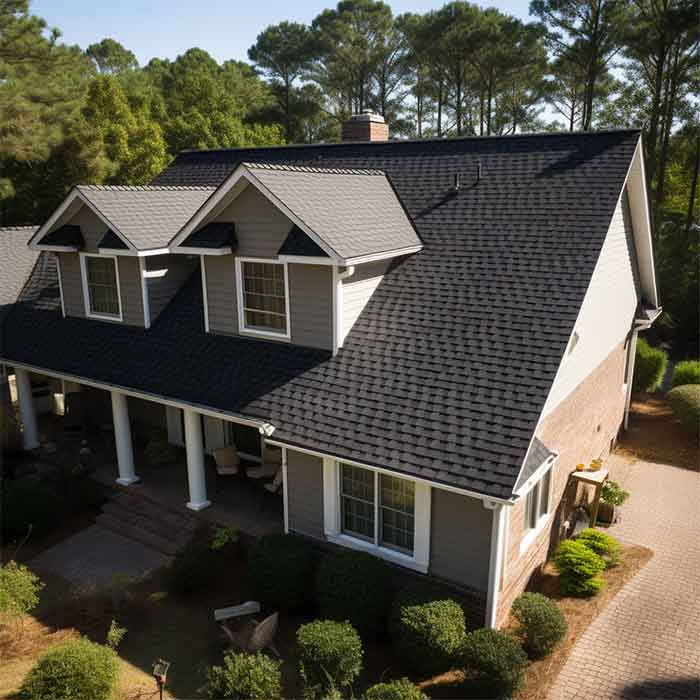
Materials like straw, thatch, and wood fall under this category.
- Key Benefits:
- Biodegradable and easily available.
- Offers a rustic and traditional aesthetic.
- Suitability in India:
- Common in rural areas and eco-tourism projects.
Eco-Friendly Roofing Tiles
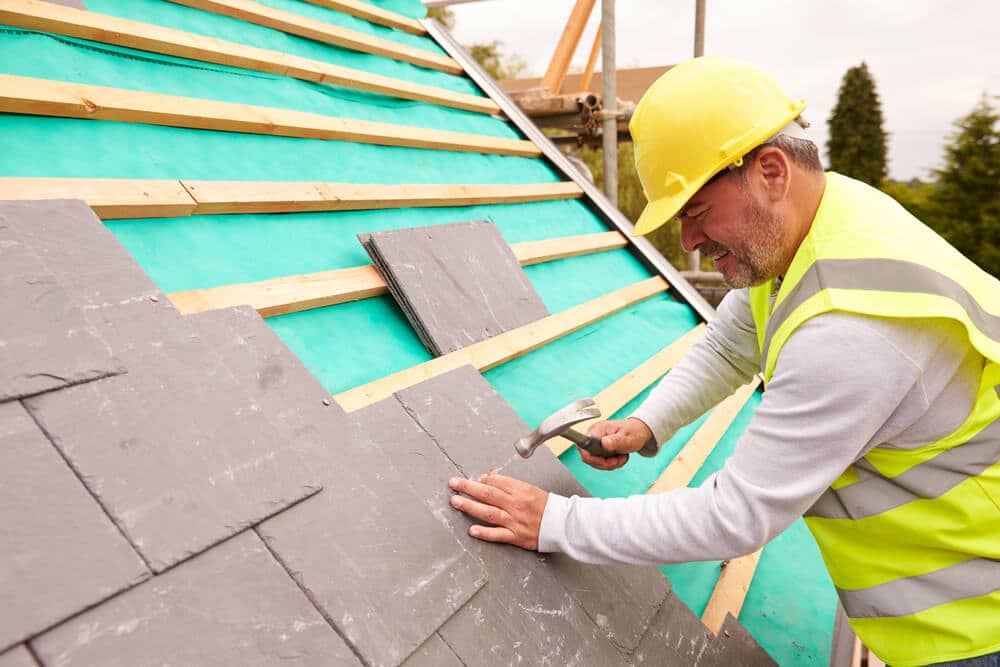
Made from recycled plastics or rubber, these tiles are durable and sustainable.
- Key Benefits:
- Keeps non-biodegradable waste out of landfills.
- Resistant to weather and UV rays.
- Suitability in India:
- Affordable option for homes in urban and semi-urban areas.
Eco-Friendly Roofing Solutions: Cleaning and Maintenance
Maintaining your eco-friendly roof ensures its efficiency and longevity. Here are some tips:
- Non-Toxic Cleaning Solutions:
Use biodegradable cleaners to avoid harming the environment. - Regular Inspections:
Check for cracks, moss, or debris buildup. - Specialized Maintenance for Green Roofs:
- Ensure proper irrigation.
- Regularly trim overgrown plants.
- Protective Coatings:
Apply UV-resistant or waterproof coatings for materials like bamboo or metal.
Eco-Friendly Building Materials for Homes: A Holistic Approach
While eco-friendly roofing materials are crucial, a truly sustainable house integrates other elements:
- Walls: Recycled bricks, mud blocks, or compressed earth blocks.
- Insulation: Natural fibers like sheep wool or hemp.
- Flooring: Cork, bamboo, or recycled tiles.
- Windows: Double-glazed glass for better energy efficiency.
What to Consider When Choosing Eco-Friendly Roofing Options
- Climate Compatibility:
- White roofs are best for hot climates.
- Green roofs work well in urban heat zones.
- Budget:
- Reclaimed materials and bamboo are affordable yet effective options.
- Longevity:
- Opt for durable materials like metal or solar tiles for long-term savings.
- Aesthetics:
- Reclaimed slate and clay offer timeless elegance.
- Sustainability Certifications:
- Look for LEED or GRIHA-certified materials in India.
Conclusion
The year 2025 is a perfect time to embrace eco-friendly roofing materials for house construction, ensuring your home is not just a shelter but a sustainable haven. From white roofs and bamboo panels to reclaimed slate and green roofing systems, the options are endless and cater to a variety of needs, climates, and budgets.
At Housiey, we are committed to promoting sustainable living through eco-friendly building materials for homes. Our aim is to make home construction not only efficient but also environmentally conscious.
Don’t miss out! Read our blog on “Bhoomi Puja Mahurat 2025” for insights into starting your construction project on an auspicious note.

